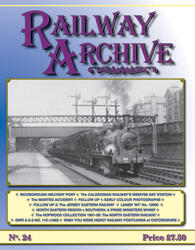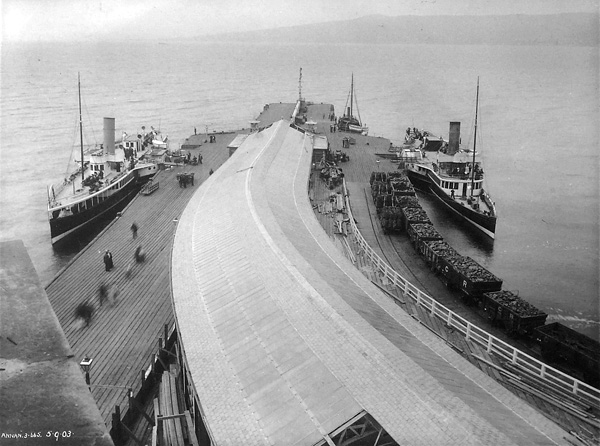Railway Archive Issue 24

Railway Archive Issue 24
80 pages. 275x215mm. .
ISSN 1477-5336 24
£7.50
sold out
80 pages. 275x215mm. .
ISSN 1477-5336 24
£7.50
sold out
Contents: Richborough Military Port by Jeff Wells, p. 3; Creating An Edwardian Railway Masterpiece: The Caledonian Railway’s Wemyss Bay Station by Jim MacIntosh, p. 19; Follow Up 1: Early Colour Photographs, p. 46; The Marteg Accident by Mike Christensen, p. 48; Follow Up 2: The Jersey Eastern Railway, p. 50; L&NER ‘W1’ No. 10000 by Brian Arman, p 54; North Eastern Region Versus Southern: A Prime Minister’s Whim? by A.J. Mullay, p. 57; The Hopwood Collection: The North Eastern Railway by Brian Arman, p. 61; GWR 2-2-2 No. 110 c1862 by Harry Jack, p. 68; Wish You Were Here? Railway Postcards of Oxfordshire by Neil Parkhouse, p. 69

Railway Archive Issue 24 - Sample Images

From 'Creating an Edwardian Railway Masterpiece: The Caledonian Railway's Wemyss Bay Station' : From the vantage point of the clock tower, the layout of the pier and its operation can be clearly seen. The finishing touches to the roof have still to be completed and the luggage ramp needs clearing of the loose timber. A ‘Puffer’, another quintessential type of Clyde vessel, is moored on the outer berth. It is not known if the use of the pier by vessels other than steamers was a regular occurrence. However, the owners of Kelly House (seen in Plate 2) had included, in an Appendix to the Caledonian 1899 Act, a clause stating ‘shall have the free use at all times of and access to the pier for his yacht, and for loading and unloading thereat of his household traffic’. The steamers are PS Marchioness of Lorne (1891) on the left and PS Marchioness of Bute (1890) on the right. Both had been built in Port Glasgow, the birthplace of Comet, the first commercial passenger steamboat in the world, and both survived their WW1 service as minesweepers.
